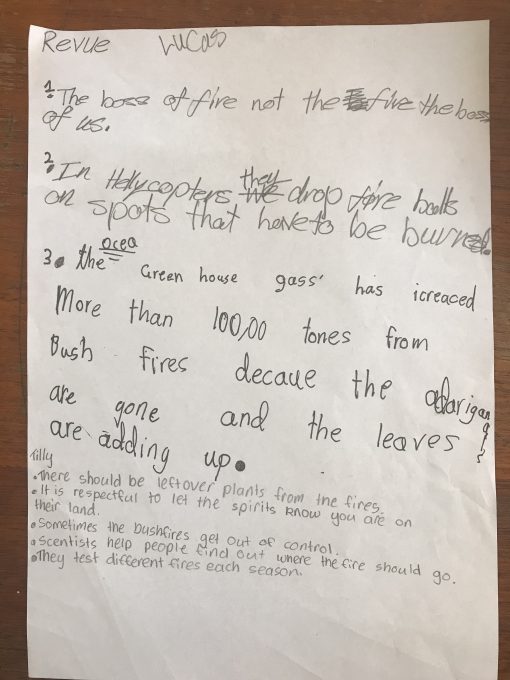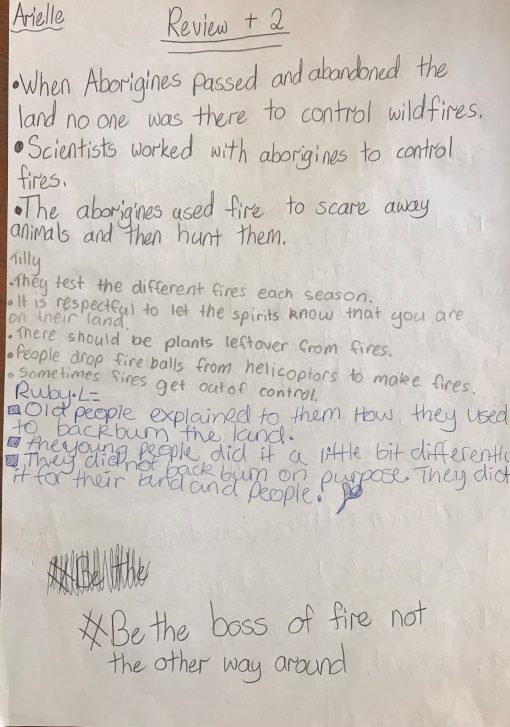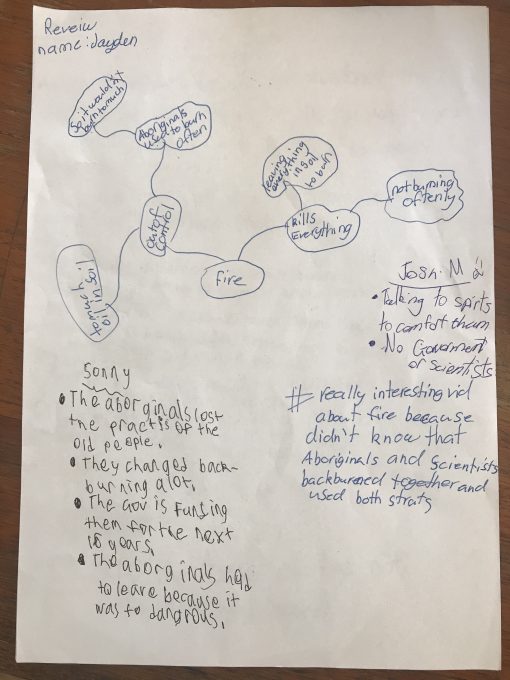Review + 2 is a thinking routine I love. I share information with the students – most often for this it is a video. They watch the video without taking notes. I encourage them to be an attentive listener and trust that the key points will stay with them. If the routine is new to them I will often play the video twice. At the end of the video, in silence, they record as many key points as they can remember. How they do that (bullet point list, mind map, sentences) is their choice. At the end of 4 minutes it’s ‘pencils down’. The students leave their note page on their desk and move to another desk in the room. Again in silence they have 4 mins to read the notes written by their peer and add key points that they know – but are missing on the page. This step is repeated…giving us review (the student’s original notes) + 2 (notes added by peers). I encourage them to write their name so that information can be clarified if required. At the end, the students return to their own page and review all the information. Sometimes I ask they to write a hashtag headline telling me what they believe the main message from the video is, other times they use the information gathered as part of a larger research project.
This week during a Year 5 lesson on fire I introduced the students to this routine. At the end Jack said “This would be a cool thing to do before a test”. His comment got me thinking about other possible uses for the routine.
How could I use this routine to assess my lesson, my teaching?
After reading the headlines the students created at the end of my ‘fire’ lesson I realised how their interpretation of the main idea in the video varied. This made me wonder…what understanding are they taking from what I teach them?
With this thought in mind I have decided to try using Review + 2 to conduct an ‘exit survey’ for my lessons. I am thinking the process will be
- Set up a section in my classnote book in the ‘Collaboration’ section.
- Add 30 pages to the section and number them 1 to 30. Assign students a number.
- Allow 5 minutes for students to type their notes onto their page, listing their key understanding, concepts taken from the lesson.
- Provide 2 jars with the numbers 1-30. Students select a number from each jar and are responsible for reviewing and adding to the notes on those pages in onenote.
- Allow time for students to return to their own page and review the comments added.
- Open discussion – what were the key facts of the lesson? What discrepancies arose? If there was a conflict in understanding – why?
I will give this a try and let you know how it goes.
The following work samples are from the fire lesson. The stimulus was Fighting Carbon with Fire




